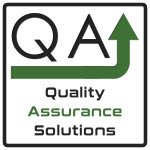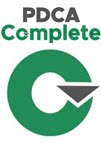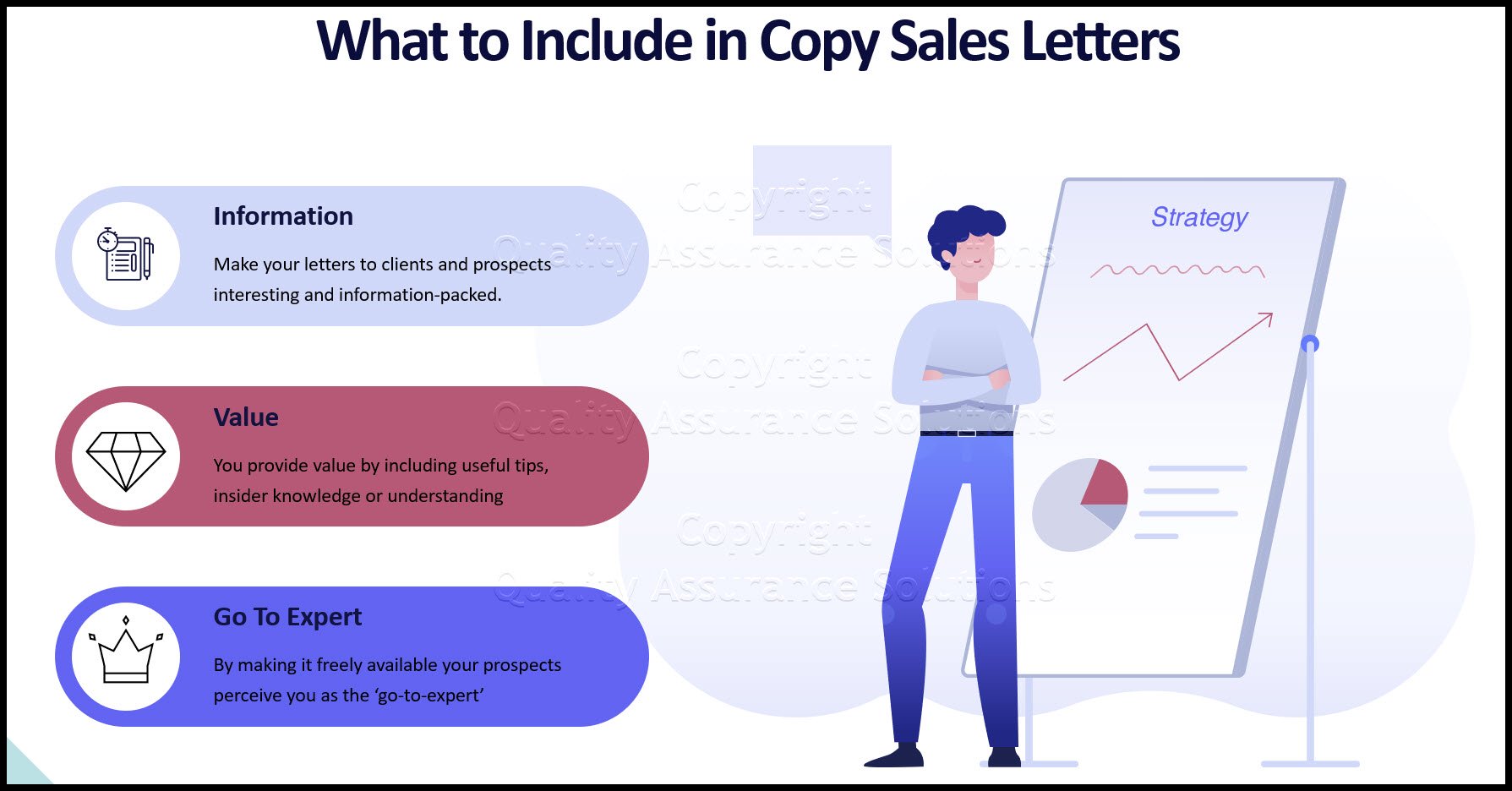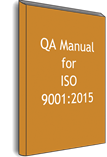Sales Letter Format
The more you tell the more you sell, important lessons to know for your sales letter format.
The biggest money-making letters and adverts are no less than salesperson-ship in print.
If you know how to create powerful, compelling headlines and their importance to your letter or advert, you are already on the road to success. Because now you’ve got your prospect’s attention – he’s curious, intrigued or just plain nosy – it doesn’t matter - you’ve got him hooked.
But you need to keep him on the hook. Like a wriggling fish, if you don’t keep his attention, he escapes and moves to something else.
And don’t think an itsy-bitsy short sales letter format does the trick. It won’t!
Business people all over the place follow this myth... “You can’t send a long letter, people won’t read it!”
Really! How do you know? Have you tested it?
John Caples, one of the greatest copywriters of all time said:
“The more you tell (factually) the more you sell”
And it’s true!
TrainingKeeper Software. Keep, organize and plan all your employees' training and activities. Software includes multi-user support with reports, certs, and calendars.
If the reader gets attracted to your offer, he wants to know as much as possible about it. He wants all the info. So he knows he’s making the right decision; an informed decision.
If your offer doesn’t appeal to him, it won’t matter how short or clever. It won’t get a qualified response.
A short sales letter format containing a minimum number of words compares to putting a gag on your best sales person 30 seconds after he/she gets to an appointment with an important prospect.
In person, you wouldn’t stop your salesperson
explaining your product or service, the benefits the prospect would gain
and how you would deliver them, would you?
In fact, I’d bet you would expect your
salesperson to demonstrate the effectiveness of your offer. He would explain the advantages the
prospect could expect to receive and why your company beats the competitors.
It’s true, isn’t it?
This is the same job your sales letter format does - it is ‘Your Salesperson in Print’.
In 1905 the copywriter, John E. Kennedy, told Albert I. Thomas
“Advertising is 'Salesmanship in Print’”
This is still true today.
If you want to know the items to put in your letter, listen what your best salesperson says. If he or she can persuade people to do business with you - ethically - then so will your letter by using the same explanations and informative descriptions.
This Data Analysis Video teaches you the basic tools for understanding, summarizing, and making future predictions with your collected data. Includes MS Excel templates.
Supply All The Facts And Figures - Good And Bad
Be honest with your prospect. When you approach him (or her) you can make life so much easier for him by supplying all the facts and figures, all the details he needs to make a decision. After all, we all prefer buying something with our eyes open.
When you tell your prospect the ‘not so good’ stuff, he feels more confident about believing the good described details. So, if it takes 2, 3, 16 or even more pages in a sales letter format to explain the offer, the benefits, anything it cannot do or resolve, the downside of not taking it and all other relevant information, then do it.
The only ‘cardinal sin’, is making your letter boring. That is unforgivable!
So how do you avoid making it boring? Surely if it is all facts and figures it’s going to be boring - except for the few people who like excessive detail?
Avoid the boring sales letter format trap at all costs. Simply by...
Exciting And Compelling Letters Create The Desire To Buy
Whatever the length your letter (or advert), it must be vibrant, exciting, interesting - even intriguing - and compelling but NEVER boring. How?
Write as you would speak and use stories (or case studies) to demonstrate how your product or service benefits others.
Stop and think for a moment. When you chat with friends, how often does someone come up with a story or anecdote? A snippet about something that happened to them or something they heard about? That's what makes conversations interesting. This too, makes your letter compelling.
Use the right language for the people you send your letter to. Don’t be ‘pompous’ or over formal. Write your letter as if you were holding a conversation with someone, be enthusiastic and write as you would speak.
Be careful - don't ‘write down’ to people. Treat your audience with respect and consideration.
8D Manager Software with 8D, 9D, 5Y and 4M report generator. Your corrective action software for managing, measuring, and reporting issues.
Sales Letter Format - Practice Writing ‘As You Speak’
If you find it difficult to ‘write as you would speak’ with the right grammar and in full sentences, then try this little trick:
Record yourself describing your product or service to a close friend, with all the enthusiasm you can muster. Now transcribe the conversation and use it as the base of your letter.
Use Stories…
Use stories and anecdotes to demonstrate how your product or service helps other people or companies. Explain the problem they faced before buying your service or product and what you did for them. Or describe how you improved their life, made things easier for them or made them more successful when they bought from you.
Include testimonials from satisfied customers - not the usual ‘excellent service, would recommend’, make sure the testimonial tells what you did for them and, more importantly, the real result they received.
Your testimonial should describe why they needed the solution you offered. It should be anecdotal.
PDCA Complete is an organizational task management system with built-in continuous improvement tools. Includes projects, meetings, audits and more.
Built by Quality Assurance Solutions.
Answer The Question In Your Prospect’s Mind
When writing your letter keep in mind the main questions everyone asks; “What’s In It For Me?” (WIIFM) and “So What?”
“The prospect doesn’t give a damn about you, your company or your product. All that matters is, “’What’s in it for me?’” Bob Hacker
This is what is possibly running through your prospect’s mind…
- Why should I bother to read this letter?
- What will I gain?
- What are the benefits of this offer?
- What results will I enjoy?
- What problem does it solve for me?
If your sales letter format starts off with a sentence stating how long you have been in business, the reaction from your audience might be ‘So What?’ Unless you turn your statement into a tangible benefit for the reader, they won’t be interested.
Nobody cares about you or your business, except you, your family and the people who work for you.
Write your letter with your reader in mind. Change ‘I’s, ‘my’, ‘mine’, ‘our’, etc. to ‘you’, ‘yours’ - write about the result from the reader’s point of view - not from yours.
Always remember to write as if you were writing to a single person. Even if you send the letter out to thousands of people, only one person reads each individual copy.
If you can't write letters in this way, write your letter as normal, then go through and change the emphasis and include real benefits for the reader.

Your Readers Approach To The Post
When people receive their post - whether for personal or business - they often use an unconscious selection process for the order they open and read it in.
People follow this common sequence...
Sort:
He (or she) decides the order, he opens each item. Usually, they open bulky - interesting - packages first because they create curiosity, especially if they are unexpected. Then they open any hand-written letters likely from a friend or relation. Next comes the ‘official - looking’ letters such as bank statements, government correspondence, etc.
Finally, if at all, the ‘junk mail’.
Yes, we call it this. We refer the marketing letters from people who try to catch our attention as ‘junk mail’. And, whether we like it or not, readers frequently regard our sales letter format in the same way. Especially true if the recipient showed no interest in the offer because we did not target the right people.
Opening a Letter:
When one opens a letter, research shows these steps:
- Check the name and address to make sure it is addressed correctly to him/her.
- Read the headline or the first sentence.
- If it has attracted his attention sufficiently, the end of the letter is checked to see who it is from and…
- If there is a P.S., they read this too. (This is why there should always be a P.S. - don’t forget it is your second chance to get your reader’s attention and entice him to read your letter).
Bin/Read:
Then they decide to either ‘bin the letter’ or read it.
You need to make sure your prospect reads your sales letter format, and not bin it. Get every possible aspect of it right so your targeted audience responds in the way you want him to.
By the way, ‘gimmicky’ bulk mail only works if the recipient actually shows interest in your offer. No amount of clever ‘promotional gifts or inserts’ can create a reader's response with no interest or desire. That’s where targeting your audience makes a real difference.
Employee Handbook Kit includes two Employee Handbook templates for Professional & Manufacturing. Includes over 60 policies and benefits templates.
Keeping Your Prospect’s Interest
You’ve grabbed your reader’s attention with your brilliant headline or opening sentence within your sales letter format. Now you’ve got to keep his (or her) interest. Follow up your headline with something to encourage him to read on.
You see this all the time in newspapers and magazines. The headline catches your attention first. Then they write the first paragraph to keep your interest high so you read the rest of the article.
The same goes for your sales letter too.
Aim to get your reader excited about your offer...
- the benefits
- how it’s been used by others
- testimonials
...does some of the work for you.
You must ‘paint the picture’ so your reader sees himself using your product or getting the result your service promises. Then…
Tell Him What To Do Next…
Now you have got your reader keyed up with your letter and offer – don’t let him drift away. Within your sales letter format, tell him the action he needs to take, the next step he must follow so he can have the promised results for himself.
“If you don’t give a very clear call to action then very little action will be taken and your sales will be minimal or even non-existent…”
Don’t assume he will figure out for himself he can phone, write or send an email to you. He’s a busy person – make it as easy as possible for him. Tell him to phone the 0800 number, tell him to complete the request or inquiry form (never call it an order form by the way, people really don’t like ‘ordering’ – too much like a sales instruction) or tell him to send an email NOW!
Emphasis the urgency of taking the next step whilst it is fresh in his mind. If he thinks “I’ll do it later” it won’t happen. Chances are your letter and response mechanism will get buried under all the other things vying for his attention every day.
Get certified in Risk Management through our completely on-line training system. Study at your own pace.
Make It Easy For Your Prospects To Buy
Whenever we purchase something we ‘take a risk’ that what we are buying will do what we want or give us the result we are looking for.
And, although we don’t vocalise it the question we are asking is “am I getting value for my money, will I regret this purchase?”
Because you believe in your service or product you would be quick to reassure your customer “Yes, you get exactly what I’m promising”. You do your best to remove any doubt from his mind.
The way to do this in your sales letter format or advert is by using ‘risk-reversal’ -- give your customer peace of mind by describing your guarantee ‘up-front’.
“Giving a money-back guarantee will reassure your prospect and give a startling increase to your results”
Tell your customer you give a 100% money-back promise and you are taking the risk off his shoulders; give him the confidence and peace of mind to go ahead.
I was explaining this to a business coach. She was very concerned about offering a full money-back promise and in fact said she found it ‘very scary’.
When I asked her what she would do if a client of hers was unhappy with her service, would she give them a refund or say “tough!” she quickly responded she wouldn’t want the client to be unhappy and would refund immediately.
“Well, where’s the difference?” I queried “As an ethical business woman you would treat your client decently, why not tell people at the beginning so they are reassured, rather than ‘crossing that bridge’ when you come to it?”
Many businesses are concerned about giving guarantees because they think people will take advantage. Most people genuinely want to do business and gain the benefit you are describing. Provided your service or product does perform as you have claimed your customer will be happy and won’t need to take up your guarantee.
Experience has shown the attrition rate rarely reaches even 5%. So, if offering a risk-reversal guarantee within your sales letter format increases your results by, let’s say 45% then, even if you do have an unexpected 5% attrition, you have still gained 40% you wouldn’t have had without the guarantee.
- QAS Home
- Copywriting
- Sales Letter Format
|
Quality Assurance Solutions Robert Broughton (805) 419-3344 USA |
 |
|
Software, Videos, Manuals, On-Line Certifications | ||
|
An Organizational Task Management System. Projects, Meetings, Audits & more | ||
|
Corrective Action Software | ||
|
Plan and Track Training | ||
|
AQL Inspection Software |
|
450+ Editable Slides with support links | ||
|
Learn and Train TRIZ | ||
|
Editable Template | ||
|
Templates, Guides, QA Manual, Audit Checklists | ||
|
EMS Manual, Procedures, Forms, Examples, Audits, Videos | ||
|
On-Line Accredited Certifications Six Sigma, Risk Management, SCRUM | ||
|
Software, Videos, Manuals, On-Line Certifications |













































